Recombinant Proteins(重组蛋白)
Recombinant proteins are a new combination of genes that forms DNA. Recombinant DNA technology allows for the production of wild type and modified human and mammalian proteins at bulk quantities. Recombinant proteins are made from cloned DNA sequences which usually encode an enzyme or protein with known function
Recombinant proteins are made through genetic engineering, also called gene splicing or recombinant DNA technology. By putting human, animal or plant genes into the genetic material of bacteria, mammalian or yeast cells, these microorganisms can be used as factories or producers to make proteins for medical, academic and research uses.
A vector is simply a tool for manipulating DNA and can be viewed as a "transport vehicle" for the production of proteins from specific DNA sequences cloned into them. Purification and expression of a protein can sometimes be quite complicated & time-consuming, therefore an additional tag is used in addition to the specific DNA sequence which will facilitate the purification & expresion of the recombinant protein.
Recombinant Proteins are proteins that their DNA that has been created artificially. DNA from 2 or more sources which is incorporated into a single recombinant molecule. The DNA is first treated with restriction endonuclease enzyme which the ends of the cut have an overhanging piece of single-stranded DNA. These are called "sticky ends" because they are able to base pair with any DNA molecule containing the complementary sticky end. DNA ligase covalently links the two strands into 1 recombinant DNA molecule.
Recombinant DNA molecule must be replicated many times to provide material for analysis & sequencing. Producing many identical copies of the same recombinant DNA molecule is called cloning. Cloning is done in vitro, by a process called the polymerase chain reaction (PCR). Cloning in vivo can be done in unicellular microbessuch as E. coli, unicellular eukaryotes like yeast and in mammalian cells grown in tissue culture.
Recombinant DNA must be taken up by the cell in a form in which it can be replicated and expressed. This is achieved by incorporating the DNA in a vector. A number of viruses (both bacterial and of mammalian cells) can serve as vectors.
Recombinant DNA is also sometimes referred to as chimera. When combining two or more different strands of DNA.There are 3 different methods by which Recombinant DNA is made. 1. Transformation, 2. Phage-Transfection 3.Yeast, Plant & Mammalian Transformation. When using the method of transformation one needs to select a piece of DNA to be inserted into a vector, cut a piece of DNA with a restriction enzyme and ligate the DNA insert into the vector with DNA Ligase. The insert contains a selectable marker which allows for identification of recombinant molecules. An antibiotic marker is used in order to cause death for a host cell which does not contain the vector when exposed to a certain antibiotic.
Trasnformation is the insertion of the vector into the host cell. The host cells are prepared to take up the foreign DNA. Selectable markers are used for antibiotic resistance, color changes, or any other characteristic which can distinguish transformed hosts from untransformed hosts. Yeast, Plant & Mammalian Transformation is done by micro-injecting the DNA into the nucleus of the cell being transformed. Phage-Transfection process, is equivalent to transformation except for the fact that phage lambda or MI3 is used instead of bacteria.
These phages produce plaques which contain recombinant proteins which can be easily distinguished from the non-recombinant proteins by various selection methods.
Significant amounts of recombinant protein are produced by the host only when expression genes are added. The Protein’s expression depends on the genes which surround the DNA of interest, this collection of genes act as signals which provide instructions for the transcription and translation of the DNA of interest by the cell. These signals include the promoter, ribosome binding site, and terminator.
The recombinant DNA is inserted into expression vectors which contain the promoter, ribosome binding site, and terminator.
In prokaryotic systems, the promoter, ribosome binding site, and terminator have to be from the same host since the bacteria is unlikely to understand the signals of human promoters and terminators. The designated gene must not contain human introns since the bacteria does not recognize it and this results in premature termination, and the recombinant protein may not be processed correctly, be folded correctly, or may even be degraded.
The peptide sequence can be added as an extension at the N-terminal. Researchers can select the specific purification system which they would like to use. The unique vectors available contain several features needed for the production of bulk quantities of the target protein. The peptide sequence is usually placed in the vector so that it is designed to be a point of attack for a specific protease. Thus, after the recombinant protein is expressed and extracted from bacteria, specific peptide extension can be used to purify the protein and subsequently removed from the target protein to generate a nearly natural sequence on the final product.
6 or more consistent Histidine residues act as a metal binding site for recombinant protein purification and expression. The hexa-His sequence is called a His-Tag sequence which can be placed on the N-terminal of a target protein by using vectors from various commercial molecular biology companies. The His-Tag contains a cleavage site for a specific protease. His-Tag recombinant proteins are purified by Metal Chelate Affinity Chromatography such as nickel ion columns that are used as the heavy metal ion and the His-Tag protein is eluted from the metal-chelate column with Histidine or imidazole. Then the purified His-Tag protein is treated with the specific protease to cleave off the His-Tag or not if the tag doesn’t affect the active site of the protein.
Proteins have metal binding sites which can be used for the purification of recombinant and natural proteins. This type of purification is rather simple when using a gel bead which is covalently modified so that it displays a chelator group for binding a heavy metal ion like Ni2+ or Zn2+. The chelating group on the gel bead contains a small amount of the ligands needed to hold the metal ion. So when the protein’s metal binding site finds the heavy metal, it will bind by providing the ligands from its metal binding site to attach to the metal ion displayed on the chelator location of the gel bead. This purification method is quite identical to affinity chromatography when purifying metal-binding class of proteins.
Products for Recombinant Proteins
- Actin(7)
- ADAM(3)
- Adaptor-Related Protein Complex(3)
- ADP-Ribosylation Factor(21)
- Ag85(2)
- Albumin(7)
- Allergy(156)
- Alpha-2-HS-Glycoprotein(4)
- Anaplasma(3)
- Angiogenin(2)
- Ankyrin Repeat Domain(5)
- Annexin(20)
- Anterior Gradient Protein(3)
- ASF1 Anti-Silencing Function 1(2)
- ATP Synthase Mitochondrial(3)
- ATPase(9)
- Autophagy Related(4)
- B Cell Lymphoma(24)
- B9 Protein(2)
- Babesia Microti(3)
- Baculoviral IAP Repeat-Containing(3)
- Bartonella H.(3)
- Basic Transcription Factor(2)
- BATF(2)
- Bax(2)
- Beta 2 Microglobulin(3)
- BID(4)
- Biglycan(3)
- Bridging Integrator(2)
- Bromodomain Containing(3)
- Cadherin(8)
- Calbindin(4)
- Calcium Binding Protein(30)
- Calmodulin(4)
- Calpain(2)
- Calponin(2)
- Calreticulin(2)
- Calumenin(2)
- Candida Albicans(4)
- Canopy FGF Signaling Regulator(3)
- Capping Protein(2)
- Caspase Recruitment Domain Family(2)
- CCR4-NOT Transcription Complex(2)
- CEA(9)
- CEBP(2)
- Cell Division Cycle(5)
- Cellular Retinoic Acid Binding Protein(2)
- Centrin(3)
- Centromere Protein(7)
- Charged Multivesicular Body Protein(3)
- Chloride Intracellular Channel(2)
- Chromatin Modifying Protein(4)
- Chromobox(3)
- Chromogranin(6)
- Chromosome Open Reading Frame(17)
- Clathrin(2)
- Coagulation Factors(7)
- Cofilin(2)
- Coiled-Coil Domain(9)
- Collagen(16)
- COMM Domain Containing(4)
- Complement Component(55)
- COP9 Signalosome(3)
- C-Reactive Protein(6)
- Crystallin(13)
- C-type Lectin Domain(11)
- CUE Domain Containing(2)
- Cystatin(25)
- Cysteine-Rich(2)
- Cysteine-Rich Secretory Protein(3)
- Cytochrome(9)
- Cytohesin(4)
- Cytokeratin(14)
- DCUN1D(3)
- DEAD Box Protein(2)
- Decorin(3)
- Density Lipoprotein(8)
- Developmental Pluripotency Associated(3)
- Dickkopf-Related Protein(7)
- DiGeorge Syndrome Critical Region(2)
- DNA-Damage Protein(7)
- Dynactin(4)
- Dynein Light Chain(7)
- Dysbindin(2)
- Ectodysplasin(4)
- Elongator Acetyltransferase Complex(2)
- Endoplasmic Reticulum Protein(3)
- Endothelial Cell-Specific Molecule 1(4)
- EPH Receptor(6)
- Ephrin(13)
- ERCC(1)
- Eukaryotic Translation Initiation Factor(21)
- Exosome Component(6)
- FABP(28)
- Family with Sequence Similarity(8)
- F-Box Protein(1)
- Ferritin(3)
- Fibrinogen(3)
- Fibronectin Type III Domain Containing(2)
- Four And A Half LIM(2)
- Fragile Histidine Triad(2)
- G Antigen(3)
- GABA(A) Receptor-Associated Protein(3)
- Gastrokine(3)
- GDP Dissociation Inhibitor(2)
- General Transcription Factor(6)
- GIPC PDZ Domain(2)
- Gliadin(3)
- Glycophorin(3)
- Glycoprotein Nmb(3)
- Glypican(3)
- Gremlin(2)
- GTPase IMAP Family(2)
- GTP-Binding Protein(2)
- Guanine Nucleotide Binding Protein(11)
- Hairy and Enhancer of Split(2)
- Haptoglobin(5)
- Heat Shock Protein(66)
- Hematological And Neurological Expressed(2)
- Hemoglobin(8)
- Hemopexin(3)
- High-Mobility Group(8)
- HINT(2)
- HLA(8)
- HNRNP(3)
- Hypoxia-Inducible Factor(3)
- IMPAD1(4)
- Ig Heavy Chain Constant Region(7)
- Inhibitor of DNA Binding(2)
- Inhibitor of Growth Family(2)
- Integrin(52)
- Intercellular Adhesion Molecule(9)
- Junctional Adhesion Molecule(3)
- Karyopherin(2)
- KCTD(4)
- Killer Cell(8)
- Killer Cell Lectin-like Receptor(9)
- Kirsten Rat Sarcoma Viral Oncogene(2)
- Kruppel-Like Factor(6)
- Lactoferrin(3)
- LBP(3)
- Leukocyte Cell Derived Chemotaxin(3)
- Leukocyte-Associated Ig-Like Receptor(3)
- LIN Protein(5)
- Listeriolysin(2)
- LRG1(3)
- Lymphocyte Antigen(3)
- Lysosomal-Associated Membrane Protein(3)
- MAD2(2)
- MAF(3)
- Mago-Nashi Homolog(2)
- Maltose Binding Protein(3)
- Mediator Complex(5)
- Melanoma Antigen Family A(8)
- Member RAS Oncogene Family(40)
- Mesoderm Development Candidate(2)
- Methylmalonic Aciduria(2)
- MHC class I chain-related gene(3)
- Microfibrillar Associated Protein(4)
- Microtubule-Associated Protein(8)
- Mitochondrial Ribosomal Protein(8)
- Mitochondrial Transcription Factor(2)
- Mortality Factor(2)
- Myelin Basic Protein(1)
- Myelin Oligodendrocyte Glycoprotein(4)
- Myoglobin(4)
- Myosin Light Chain(12)
- Myxovirus(3)
- NANOG(4)
- NCK Adaptor Protein(2)
- NECTIN(3)
- Nescient Helix Loop Helix(2)
- Neuronal Calcium Sensor(2)
- Neutrophil Cytosolic Factor(2)
- NFKB Inhibitor(5)
- NHP2(2)
- N-Myc Downstream Regulated(3)
- Non-Metastatic Cells(7)
- NPM(2)
- NTF2-like Export Factor(1)
- Nucleobindin(2)
- Nucleopurin(2)
- Nucleosome Assembly Protein(2)
- Orosomucoid(5)
- Other(755)
- Outer Membrane Protein(1)
- p53(20)
- Paired Box(2)
- Parkinson Disease Protein(3)
- Parvalbumin(2)
- PCNA(2)
- PDZ Domain Containing(2)
- Pentraxin(3)
- Peroxisomal Biogenesis Factor(2)
- PHD Finger Protein(2)
- Phosducin-Like(2)
- Phosphatase and Tensin(1)
- Phospholipid Scramblase(2)
- PIH1 Domain Containing(2)
- Pim Oncogene(2)
- PITPN(2)
- Polymerase (RNA) (DNA directed) Polypeptide(7)
- Prefoldin(5)
- Pregnancy Specific Beta-1-Glycoprotein(4)
- Prion Protein(2)
- Processing Of Precursor(2)
- Profilin(4)
- Programmed Cell Death(8)
- Prohibitin(2)
- Proprotein Convertase Subtilisin/Kexin(1)
- Protein C-Ets(2)
- Protein Phosphatase(2)
- Prothymosin(2)
- RAD51(9)
- RAN Binding Protein(2)
- Ras-Related C3 Botulinum Toxin Substrate(5)
- RASSF(2)
- Receptor Activity-Modifying Protein(2)
- Regenerating Islet-Derived(4)
- Regulator of Calcineurin(3)
- Regulator of G-Protein Signaling(9)
- Related RAS Viral (r-ras) Oncogene(2)
- Relaxin(3)
- Renin(5)
- Reticulocalbin(2)
- Retinoblastoma(3)
- Retinoic Acid Early Transcript(6)
- Retinoic Acid Receptor Responder(4)
- Rho Family GTPase(2)
- Rho GDP Dissociation Inhibitor(2)
- Ribosomal Protein(30)
- Ring Finger Protein(5)
- RNA Binding Motif Protein(3)
- R-Spondin(4)
- RWD Domain Containing(2)
- Sclerostin(3)
- SDHAF(2)
- Secretagogin(2)
- Secreted Frizzled-Related Protein(6)
- Secretoglobin(4)
- Secretogranin(2)
- Selectin(7)
- Selenoprotein(2)
- Septin(3)
- Serglycin(2)
- Serine Peptidase Inhibitor(3)
- Serpin(27)
- SERTA Domain Containing(2)
- SH2 Domain(2)
- SH3 Domain(6)
- SIGLEC(5)
- Signal Recognition Particle(2)
- Signal Sequence Receptor(3)
- Signal-Regulatory Protein(6)
- Single-Stranded DNA Binding Protein(2)
- Sirtuin(35)
- SLAM Family(5)
- SMAD(3)
- SNRP(15)
- Solute Carrier Family(3)
- Sorting Nexin(2)
- SPSB(1)
- sRAGE(3)
- SRY (Sex Determining Region Y)-Box(3)
- Stathmin(4)
- STIP(3)
- Streptavidin Proteins(5)
- Superoxide Dismutase(36)
- Surfeit(2)
- Synaptobrevin(11)
- Synaptosomal Associated Protein(5)
- Synaptotagmin(5)
- Syndecan(5)
- Syntaxin(10)
- Synuclein(7)
- Tachykinin(2)
- TAR DNA(4)
- TBC1 Domain Family(2)
- TCL(2)
- THAP Domain(4)
- Thioredoxin(15)
- TIGAR(3)
- Tissue Factor Pathway Inhibitor(3)
- TNF receptor-Associated Factor(2)
- Toll Like Receptor(1)
- Trafficking Protein Particle Complex(4)
- Transcription Elongation Factor(9)
- Transferrin(3)
- Transforming Growth Factor Beta Induced(5)
- Transgelin(2)
- Translocase Of Outer Mitochondrial Membrane(2)
- Triggering Receptor Expressed on Myeloid Cells(2)
- Tripartite Motif(4)
- Tropomyosin(3)
- Troponin(16)
- TROVE Domain Family(3)
- Trypsin(4)
- TTC(3)
- Tubulin Folding Cofactor(5)
- Tubulin Gamma(2)
- U6 Small Nuclear RNA(5)
- Ubiquinol-Cytochrome C Reductase(3)
- Ubiquitin(16)
- UCHL1(4)
- UL16 binding protein(7)
- Uroplakin(2)
- Vacuolar Protein Sorting(7)
- Vascular cell adhesion molecule(5)
- V-crk Sarcoma Virus CT10(2)
- Vimentin(3)
- Visinin-Like Protein(2)
- V-ral Simian Leukemia Viral Oncogene(3)
- WAP Four-Disulfide Core Domain(2)
- Y. Enterocolitica(8)
- Zinc Finger(16)
- Default Categoryobox(9)
- Default Categoryr Homolog(3)
- MOB1(2)
- POU Class(4)
- Protein-A(24)
- SIX Default Categoryobox(2)
- Synovial Sarcoma(2)
- Mps One Binder Kinase Activator(2)
- X Breakpoint(2)
- p62(3)
- Cat.No. 产品名称 Information
-
GC68390
α5β1 integrin agonist-1
α5β1 integrin agonist-1 作为 α5β1 integrin 激动剂,能够选择性地将 5-FU 输送到肿瘤细胞中,成功地导致肿瘤细胞死亡。
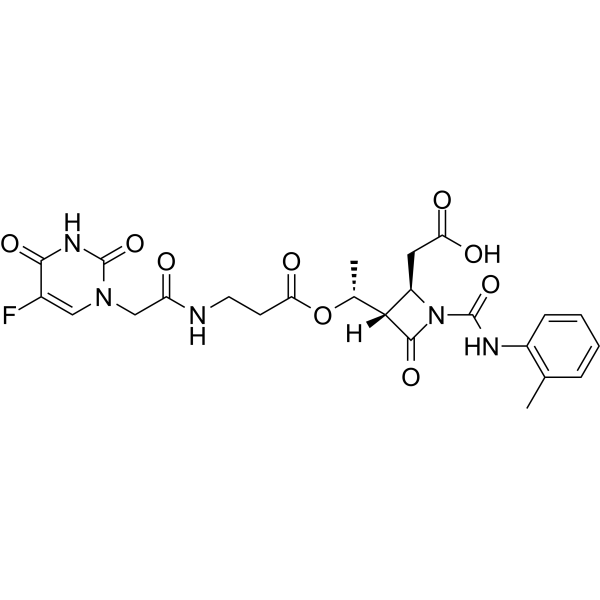
-
GC62380
αvβ1 integrin-IN-1
αvβ1 integrin-IN-1 (Compound C8) 是一种有效的选择性 αvβ1 整合素抑制剂,IC50 为 0.63 nM。具有抗纤维化作用。
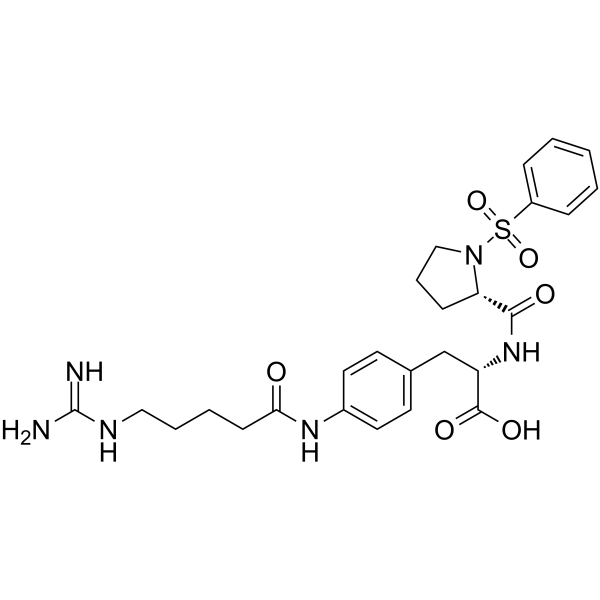
-
GC62566
αvβ1 integrin-IN-1 TFA
αvβ1 integrin-IN-1 TFA (Compound C8) 是一种有效的选择性 αvβ1 整合素抑制剂,IC50 为 0.63 nM。具有抗纤维化作用。

-
GC64932
αvβ5 integrin-IN-1
αvβ5 integrin-IN-1 是第一个有效和选择性 αvβ5 整合素抑制剂(pIC50 = 8.2)。
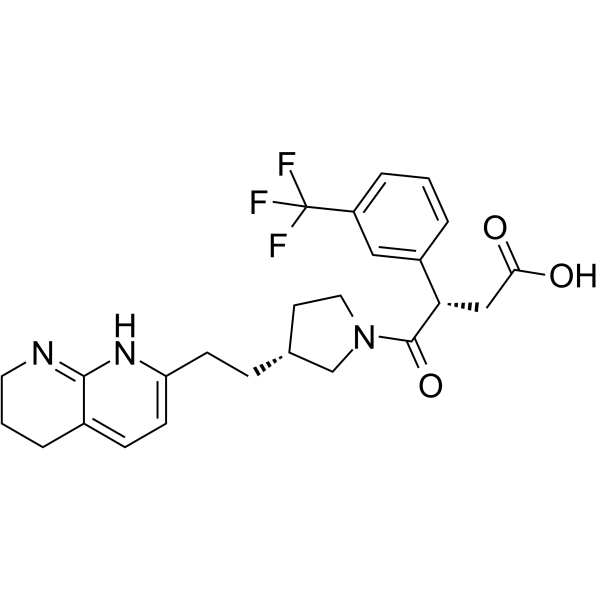
-
GC41502
β-Myrcene
月桂烯; β-Myrcene
A terpene with antioxidative properties
-
GC40802
(±)12(13)-DiHOME
Isoleukotoxin diol
A diol form of (±)12,13-EpOME
-
GC40801
(±)9(10)-DiHOME
(±)-苏式-9,10-二羟基-12(Z)-十八碳烯酸
A diol form of (±)9(10)-EpOME
-
GC17102
(-)-Tetramisole
盐酸左旋咪唑
An Analytical Reference Material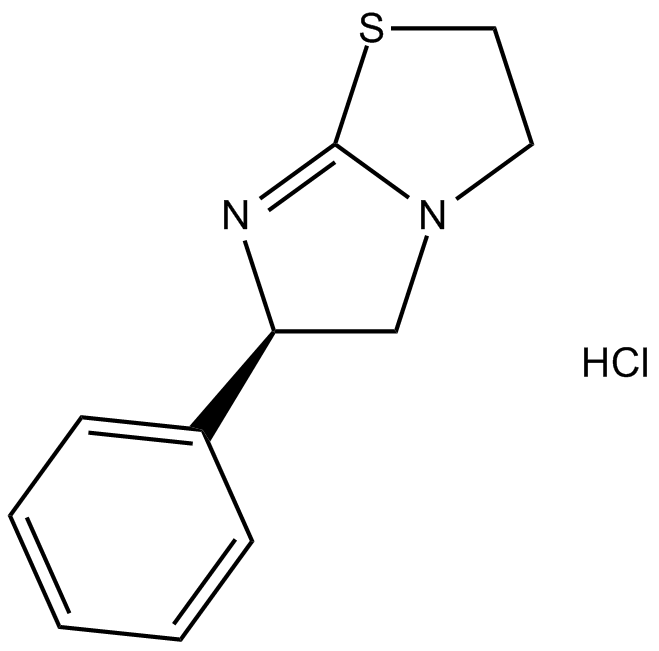
-
GC41700
(E)-2-(2-Chlorostyryl)-3,5,6-trimethylpyrazine
CSTMP
A stilbene derivative with antioxidant and anticancer activities
-
GC69837
(R/S)-Alicaforsen
(R/S)-ISIS-2302
(R/S)-Alicaforsen 是由R和S构型组成的 Alicaforsen 的消旋体。Alicaforsen是一种20个碱基长度的反义寡核苷酸,抑制 ICAM-1 的产生,ICAM-1 是一种重要的粘附分子,参与白细胞向炎症部位迁移和转运的过程。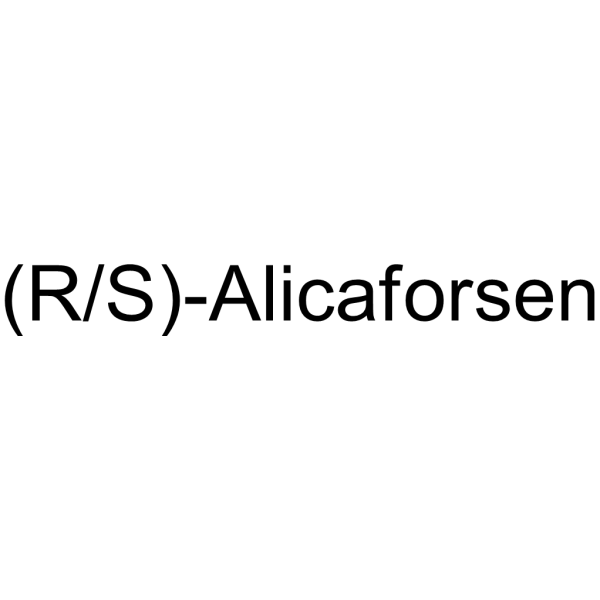
-
GC49294
1-(4-Chlorobenzhydryl)piperazine
1-(4-氯二苯甲基)哌嗪
An inactive metabolite of meclizine and chlorcyclizine
-
GC41998
1-Methyl-4-imidazoleacetic Acid (hydrochloride)
1-甲基-4-羧酸咪唑盐酸盐
A stable metabolite of histamine
-
GC42026
1-Palmitoyl-2-hydroxy-sn-glycero-3-PC
1-十六酰-SN-丙三醇-磷酸胆碱
A product of PLA2-mediated hydrolysis of phosphatidylcholine
-
GC46490
1-Palmitoyl-d3-2-hydroxy-sn-glycero-3-PC
1-Hexadecanoyl-sn-glycero-3-Phosphatidylcholine-d3, 1-Hexadecanoyl-sn-glycero-3-Phosphocholine-d3, LPC-d3, 16:0/0:0(d3) Lyso-PC, 1-Palmitoyl-sn-glycero-3-Phosphocholine-d3, PC(16:0/0:0)-d3, 16:0/0:0-PC-d3
A neuropeptide with diverse biological activities
-
GC45693
1-Palmitoyl-d9-2-hydroxy-sn-glycero-3-PC
1-Hexadecanoyl-d9-sn-glycero-3-Phosphatidylcholine, 1-Hexadecanoyl-d9-sn-glycero-3-Phosphocholine, 16:0(d9) Lyso-PC, PC(16:0-d9/0:0), 16:0-d9/0:0-PC
An internal standard for the quantification of 1-palmitoyl-2-hydroxy-sn-glycero-3-PC
-
GC18637
11β-Prostaglandin F2α
9α,11βPGF2α, 11βPGF2α, 11epi PGF2α
The primary PGD2 metabolite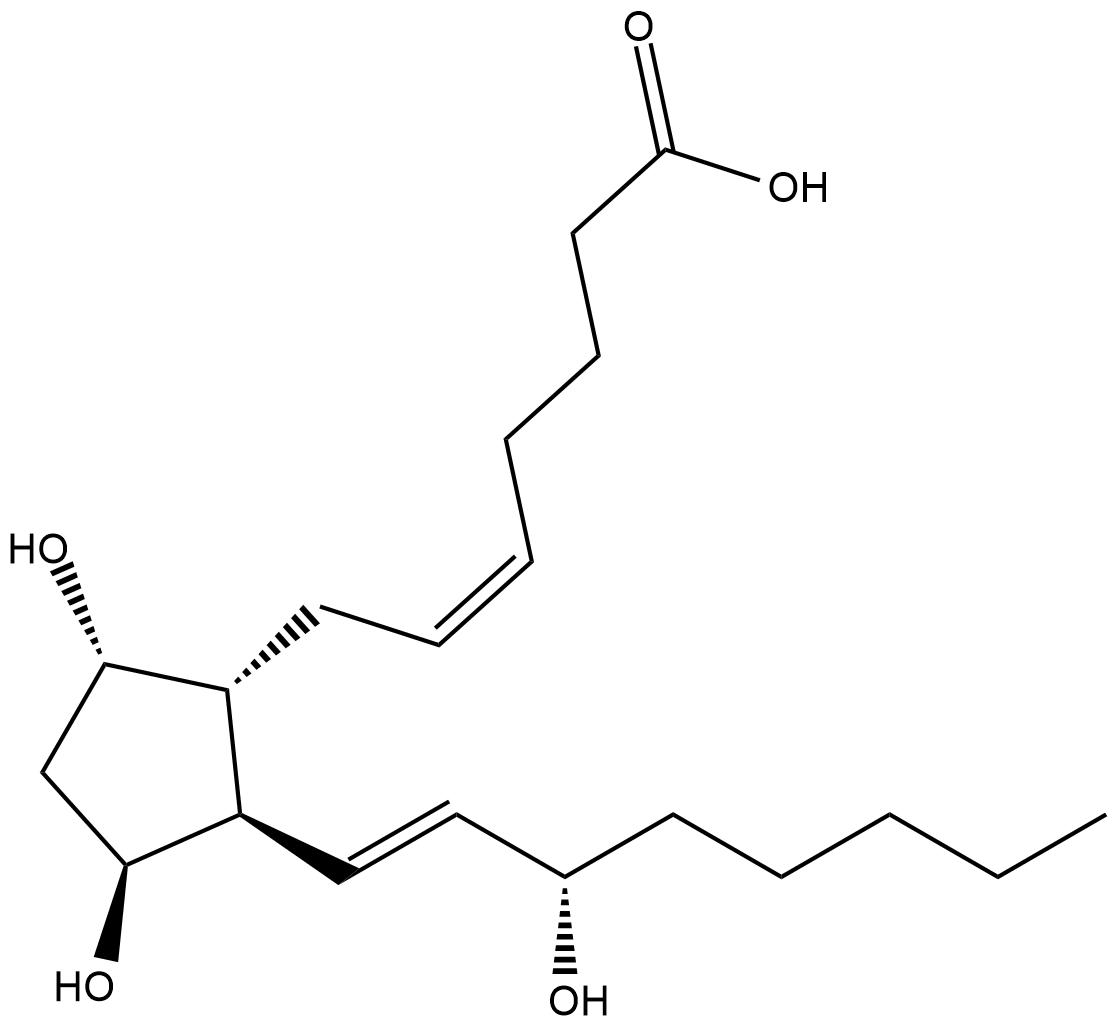
-
GC40451
15(S)-HETE
15(S)-Hydroxyeicosatetraenoic Acid
An active metabolite of arachidonic acid
-
GC91055
2,6-Xylidine-d6 (hydrochloride)
2,6-Dimethylaniline-d6, 2,6-DMA-d6
一个分析参考标准

-
GC73817
2-APQC
2-APQC是一种SIRT3激活剂,Kd值为2.756μM。
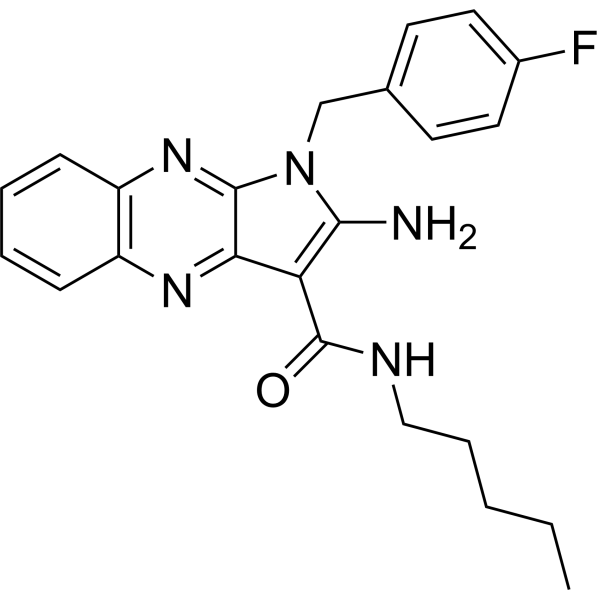
-
GC74710
2-Methylbutyrylcarnitine chloride
2-Methylbutyrylcarnitine chloride是一种肠道微生物代谢产物,与血小板中的整合素α2β1结合,增强细胞质磷脂酶A2(cPLA2)的活化和血小板的过度反应性。
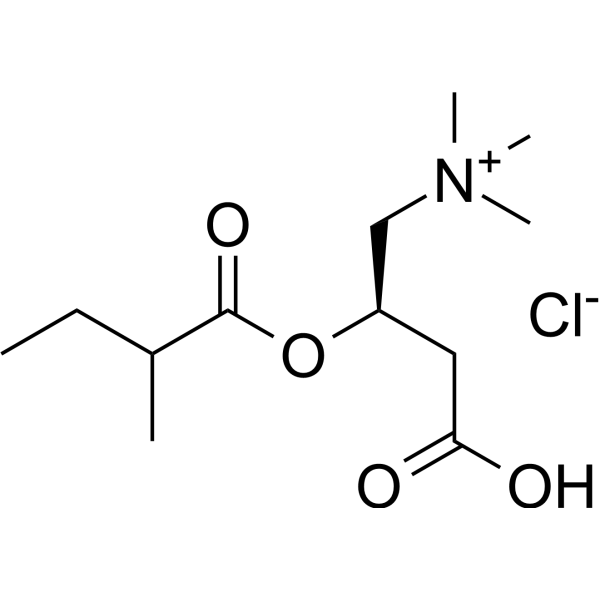
-
GC42251
3-Bromotyrosine (trifluoroacetate salt)
3-bromo-Tyr
A product of protein oxidation
-
GC42252
3-Bromotyrosine-13C9,15N (trifluoroacetate salt)
3-bromo-Tyr-13C9,15N
An internal standard for the quantification of 3-bromotyrosine
-
GC42275
3-hydroxy Desloratidine
3-羟基去氯雷他定盐酸盐
A major metabolite of desloratadine
-
GC40692
3-Propylxanthine
恩丙茶碱;恩普菲林
An adenosine receptor antagonist and PDE inhibitor
-
GC71995
5-Heptadecylresorcinol
5-Heptadecylresorcinol(AR-C17)是一种酚类脂质成分,也是一种口服活性线粒体保护剂。
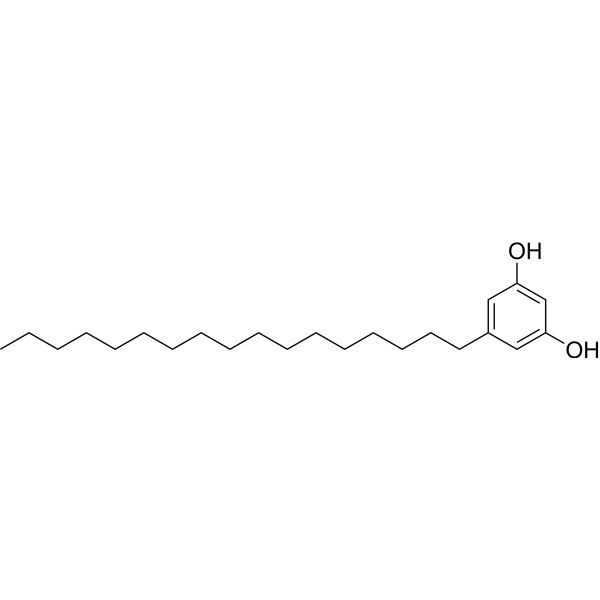
-
GC42586
6α-hydroxy Paclitaxel
6-羟基泰素
A metabolite of paclitaxel
-
GC63958
6α-Hydroxy Paclitaxel-d5
紫杉醇杂质
6α-Hydroxy Paclitaxel-d5 是 6α-Hydroxy paclitaxel 的氘代物。6α-Hydroxy paclitaxel 是紫杉醇的初级代谢物。6α-Hydroxy paclitaxel 对有机阴离子转运多肽 1B1/SLCO1B1 (OATP1B1) 具有与紫杉醇相似的时间依赖性抑制效力,但它对 OATP1B3 不具有时间依赖性作用。6α-Hydroxy paclitaxel 可用于癌症研究。
-
GC49676
6β-hydroxy Budesonide
A metabolite of budesonide
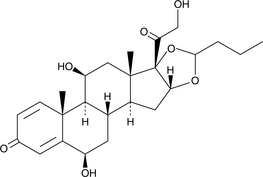
-
GC62651
7-Chloro-4-(piperazin-1-yl)quinoline
7-氯-4-(1-哌嗪基)喹啉
7-Chloro-4-(piperazin-1-yl)quinolone 是药物化学中的重要支架。7-Chloro-4-(piperazin-1-yl)quinolone 是有效的 sirtuin 抑制剂,还抑制 5-羟色胺的摄取 (IC50 为 50 μM)。7-Chloro-4-(piperazin-1-yl)quinolone 对恶性疟原虫 D10 和 K1 菌株表现出抗疟疾活性,IC50 分别为 1.18 μM 和 0.97 μM。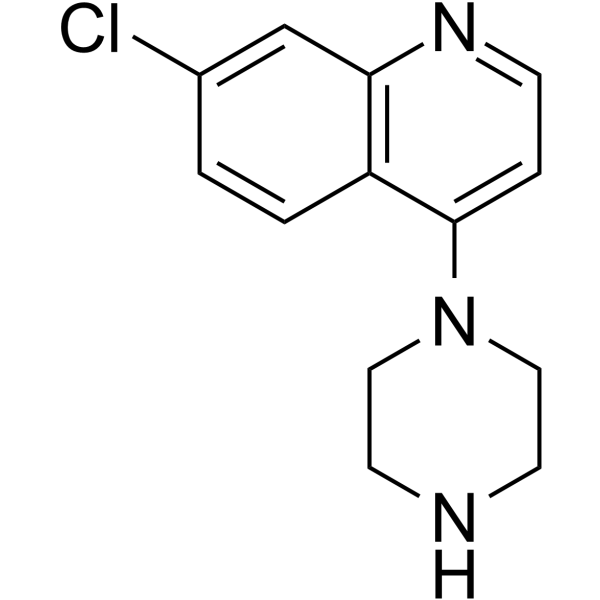
-
GC46753
9(S),12(S),13(S)-TriHOME
(-)-Pinellic Acid, 9S,12S,13S-Pinellic Acid
An oxylipin
-
GC41643
9(Z),11(E),13(E)-Octadecatrienoic Acid
αEleostearic Acid, αESA, LAF 237
A polyunsaturated fatty acid
-
GC40785
9(Z),11(E),13(E)-Octadecatrienoic Acid ethyl ester
αESA ethyl ester, Ethyl αeleostearate
A polyunsaturated fatty acid ethyl ester
-
GC40710
9(Z),11(E),13(E)-Octadecatrienoic Acid methyl ester
9顺,11反,13反-十八碳三烯酸甲酯
A polyunsaturated fatty acid methyl ester
-
GC49309
A-943931 (hydrochloride hydrate)
A histamine H4 receptor antagonist

-
GC74346
A20FMDV2
A20FMDV2是一种选择性αvβ6整合素抑制剂(IC50: 3 nM),对αvβ6的选择性比其他rgd定向整合素(αvβ3, αvβ5和α5β1)高1000倍。

-
GP22669
A2LD1 Human
AIG2-Like Domain 1 Human Recombinant

-
GP22664
AAGAB Human
Alpha & Gamma-Adaptin Binding Protein Human Recombinant

-
GP22665
AAMDC Human
Adipogenesis Associated, Mth938 Domain Containing Human Recombinant

-
GC65597
Abciximab
C7E3
Abciximab (C7E3) 是一种小鼠/人嵌合单克隆抗体,是一种糖蛋白 IIb/IIIa(glycoprotein IIb/IIIa)抑制剂。 Abciximab 通过与糖蛋白 IIb/IIIa、vitronectin 和 Mac-1 受体结合抑制血小板聚集和白细胞粘附。

-
GP22666
ABHD12B Human
Abhydrolase Domain Containing 12B Human Recombinant

-
GP22667
ABI3 Human
ABI Family, Member 3 Human Recombinant

-
GC68594
Abituzumab
EMD 525797; DI17E6
Abituzumab (DI17E6) 是一种人源化抗 integrin αV 单克隆抗体 (IgG2 型)。Abituzumab 能有效减少 FAK、 Akt 和 ERK 的磷酸化。Abituzumab 可用于癌症,尤其是前列腺癌的研究。
-
GP22668
ABRACL Human
ABRA C-Terminal Like Human Recombinant

-
GC63975
Acanthoside B
刺五加提取物
Acanthoside B 是一种具有抗炎、抗遗忘活性的生物活性木脂素。Acanthoside B 可用于阿尔茨海默病和肺部炎症等疾病的研究。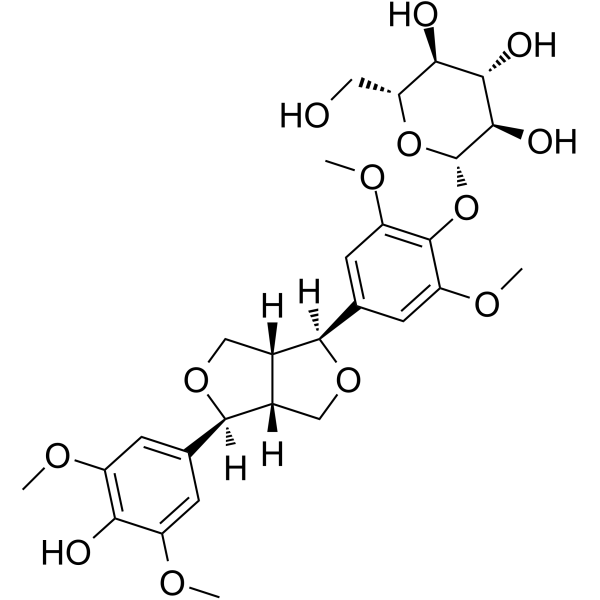
-
GP22671
ACBD6 Human
Acyl-CoA Binding Domain Containing 6 Human Recombinant

-
GP22672
ACTA2 Human
Actin, Alpha 2, Smooth Muscle, Aorta Human Recombinant

-
GP22673
Actin Protein
Actin

-
GP22704
ACTN1 Human
Actinin Alpha 1 Human Recombinant

-
GP22674
ACTR3 Human
ARP3 Actin-Related Protein 3 Human Recombinant

-
GP22675
ADAM10 Human
去整合素和金属蛋白酶结构域 10 人重组体





